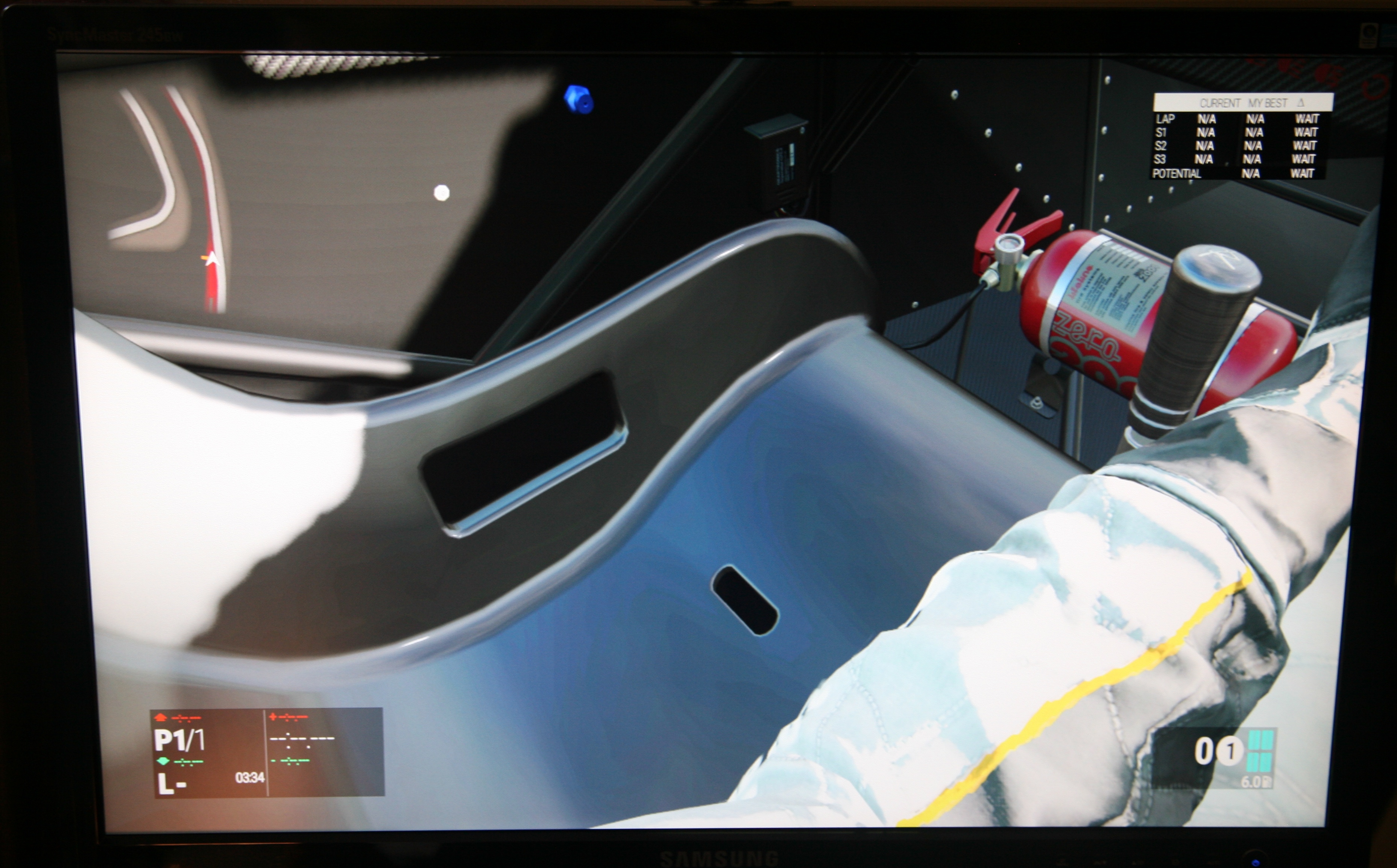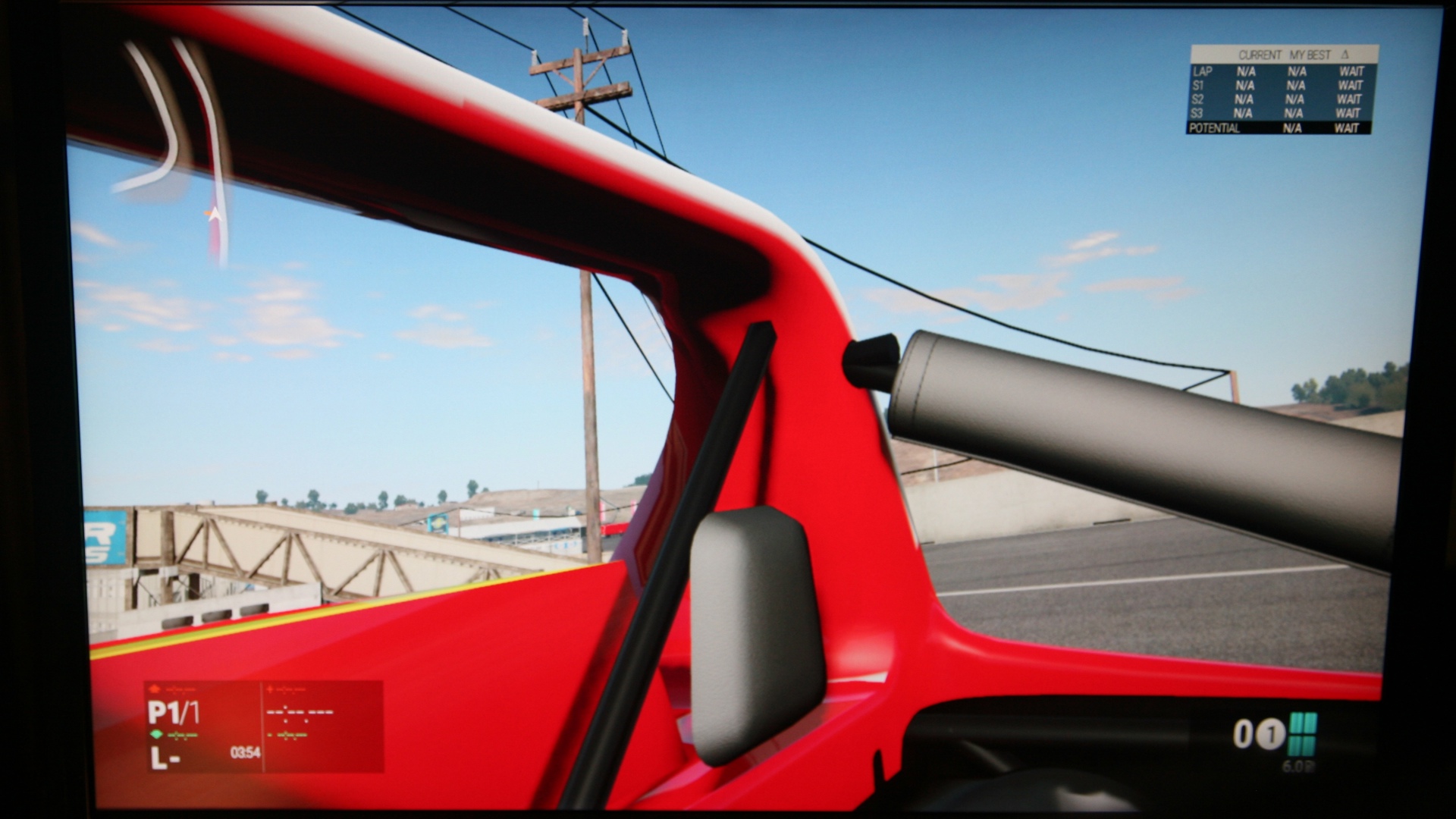Let’s face it. Driving a car is an expensive endeavour: insurance, fuel, consumables, the actual car itself. For A to B transportation, many consider it a necessary evil. But then there are the enthusiasts, those that spend hundreds or thousands on their car every year, because they see it as a hobby.
The next extreme is auto racing – probably one of the most expensive hobbies out there (although I hear horse jumping is close). Forget just the simple costs of the car and its consumables. Now we are talking track rental time, repairs, training and more. And like any sport, the more you practice the better you become. Which means for those of us with modest budgets, there is only so much we can do, due to dollar constraints.
Here is where simulator racing can really step in and help you out. Plus new technologies are now so good, you may forget you are not actually at the track.
What I’m talking about specifically is Virtual Reality, in the form of a set of goggles that strap onto your face, such as the Oculus Rift or the HTC Vive (for PC). These systems present you with an alternate reality that is so good you can almost smell the burning rubber and exhaust fumes.

Personally, I’ve driven a lot of cars on many racetracks, I have also tried many racing simulators, from the simple game on a laptop to a full simulation rig with hydraulic actuators to simulate the car movements. But I have never really enjoyed it. To me it was simply a different challenge, not something that would help me in the real world, as it never really felt authentic,
But everything has changed with the onset of Virtual Reality goggles available on the consumer market. It truly is a game changer that can now be seriously compared with driving an actual car on an actual track – a video game is no longer a video game, but a training tool that can help you in the real world. In fact, Nissan has already taken successful e-racers and turned them into equally successful real-world racers in FIA Word Endurance other series - including Canada's Micra Cup.
Imagine this. You sit down in a racing bucket seat, feet on the aluminum pedals, grab onto the leather wrapped steering wheel and look straight ahead. You strap on the Virtual Reality headset and start the car. You are instantly transported to the location you choose, driving the car you chose, a Lamborghini, a Ferrari or maybe a Mustang like you have in your own garage.

You look around, and see the radio, the steering wheel, the gear shifter. Turn your head and there is the side mirrors, rearview mirror, passenger seat and roll cage. Look behind you, look up at the sky, it’s all there, you are there and your brain is completely fooled into believing that this alternate universe is your true reality – it’s mind blowing.
This by itself is ultra cool, but once you start rolling onto the racetrack, that’s when your senses go into overload. Just like you have been taught in real life, look where you want to go and the car will follow. No longer is your brain attempting to transform a 2D image and adjust it for braking points or apexes on a track. Now you look into the corner and see the curbing and you hit it. Floor the throttle as you barrel down the long back straight, you see the brake markers coming up fast and you instinctively reach for the brake and slow the car down for the corner, first approaching corners slowly and then building confidence with every lap.
If you are lucky enough to have a driving coach, they can monitor your data logs, track your inputs as well as see where you are looking. Your driving coach can give you instant feedback without the inherent risk and more importantly, for you the driver, at a fraction of the cost!

Of course, this system is still missing one important cue to your senses, the actual g-forces being exerted on your body, but believe it or not, your brain offers up some cues from the visual effects that come close. Drop through the “corkscrew” at Laguna Seca, and you feel weightless just like in real life – it truly is an intense experience.
Unfortunately like real cars, virtual cars aren’t exactly cheap either. But I can guarantee that the money spent on a proper simulator setup will improve your real lap times more so than upgrading your suspension or adding more power to your real car.
An Oculus Rift will run you $950 for starters and in order to power the Rift you’ll need a pretty powerful gaming computer. Expect to spend no less than $1,800 on a computer if buying new (for minimum specs). You’ll also need a good wheel and pedal set, so are looking at another $500 there. And if you want an ergonomically correct “simulator rig” expect to pay another $500 - $1,000. On the whole, you are really looking at $3,500 - $4,500 on the low end, and sky’s the limit on the high end, where you can easily spend $10,000+.
To sample before buying in, there is the option of a local Virtual Reality gaming centre, although they are relatively few still. In Ottawa, Trackwerks is currently offering one hour driving sessions with coaching starting at about $60.
There’s CTRL-V that is offering Virtual Reality experiences starting at $24.99 in Waterloo, Guelph and Red Deer, Alberta, but currently does not have any racing games.

Similar venues are available in Vancouver, Edmonton, Calgary and Winnipeg, but unfortunately they also do not seem to be offering racing games, as most of them are catering to a family atmosphere.
In Toronto, RacingSim1 deserves a mention for their racing setup, but unfortunately do not yet offer VR. President Maxime Jacques says there are no solid plans for it at the moment, as motion sickness is already an issue for about five percent of clients, so they’d have to prove they can use the regular Xbox One rigs first. Their set up has a bank of large flat screens and five seated cockpits, with feedback in the steering wheel and seat, but no outright motion that imitates g-forces under braking or cornering, as some five figure pro setups offer.
Of course, at some point you really should get out onto the real track in the real world, but for those with a limited budget or those looking to improve over the long winter months, I honestly cannot stress enough how good the technology is and how much it will improve your driving.
If you are interested in learning or experiencing real racing or track driving this is as close to the real thing you are going to get.









